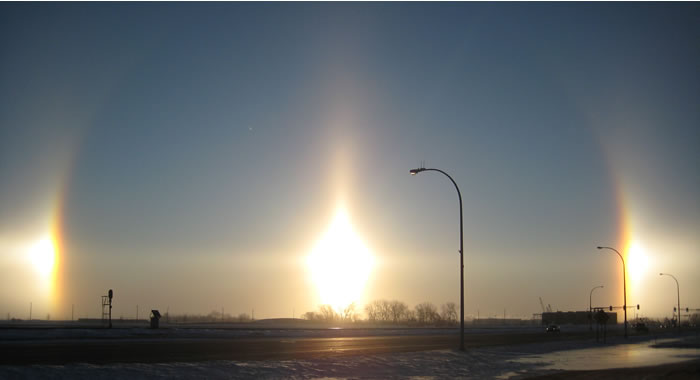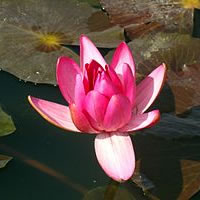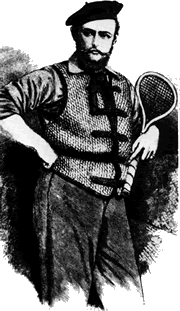
The other day I discovered the wonderful word sun dog, which refers to coloured patches of light that appear beside the sun at certain times, particularly when the sun is low in the sky. The scientific name for this phenomenon is a parhelion, from the παρήλιον (parēlion – beside the sun); from παρά (para – beside), and ἥλιος (helios – sun) [source].
In French sun dogs are known as parhélie, faux soleil (“fake sun”), soleil double (“double sun”), œil de bouc (“billygoat’s eye) or chien du soleil (“sun dog). In other languages their names are mainly based on the Greek, or some variation on fake sun.
There are also such things as moon dogs, mock moons or paraselenes, which are patches of light that appear beside the moon, though they are rarer than sun dogs, difficult to see, and only appear when the moon is very bright and full or nearly full. [source].
The friend who told me about sun dogs was using it to describe a halo around the moon or lunar halo, which, like sun and moon dogs, is a result of the refraction of light through ice crystal in cirrostratus clouds high in the upper troposphere [source]. On the night when we were talking about sun dogs the moon was only half full, so I don’t think there were any moon dogs about, but there definitely was a halo around the moon.

